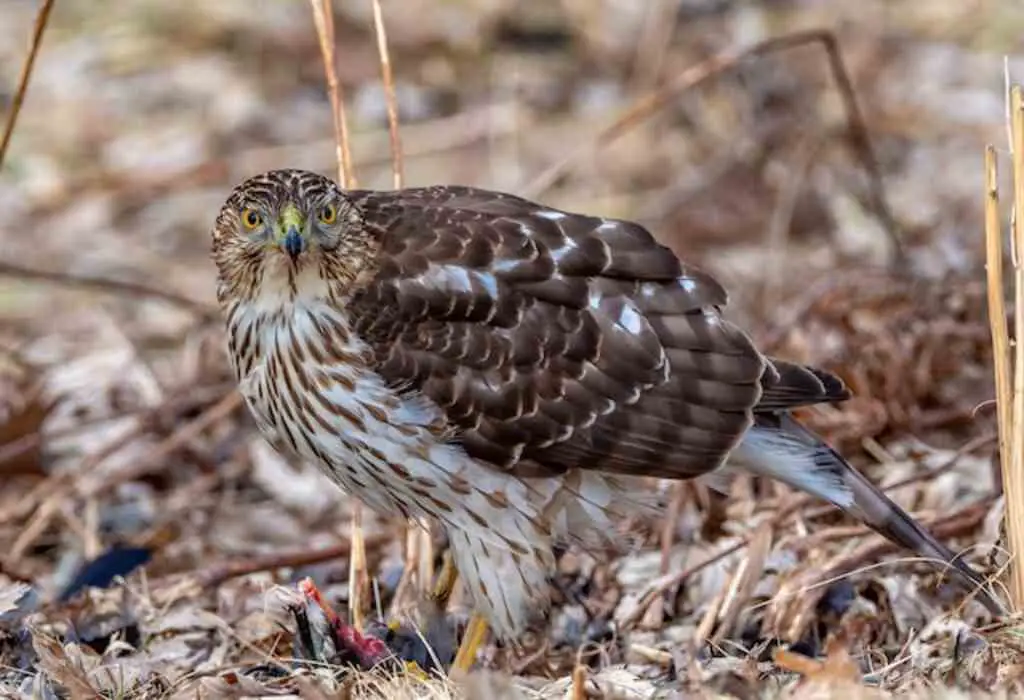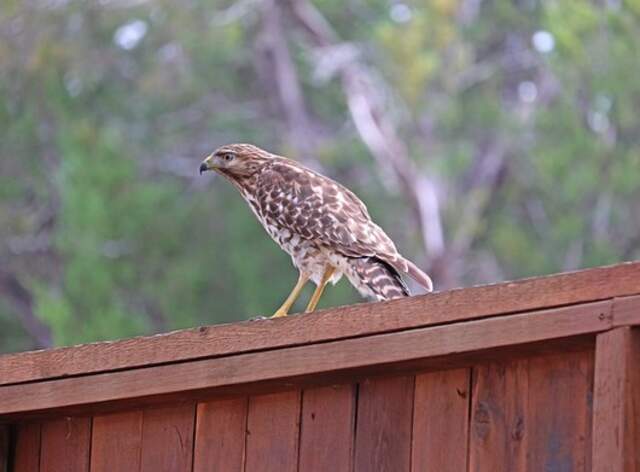Hawks are skilled predators, but do hawks eat bats? While they mainly hunt small mammals and birds, some hawks have been observed catching bats mid-flight. Since bats are most active at night and hawks typically hunt during the day, their encounters are rare but fascinating. In this article, we’ll explore whether hawks eat bats, which species are most likely to prey on them, and how these aerial hunters manage to snatch such agile targets.
Table of Contents
- 1 Key Takeaways
- 2 Overview of Hawks and Bats
- 3 The Diet of Hawks
- 4 The Diet of Bats
- 5 Circumstances when Hawks Eat Bats
- 6 Hawk Predation on Bats
- 7 Do Hawks Eat Bats?
- 8 Bat Adaptations to Avoid Predation
- 9 Other Factors that Influence Interactions
- 10 Conservation and Management
- 11 The Importance of Hawks and Bats in Ecosystems
- 12 Frequently Asked Questions
- 12.1 How do hawks catch bats in flight?
- 12.2 Do all species of hawks eat bats, or only certain ones?
- 12.3 Can bats defend themselves against hawk attacks?
- 12.4 Are there any negative impacts on the ecosystem if hawks eat too many bats?
- 12.5 How do scientists study the interactions between hawks and bats in the wild?
- 13 Conclusion
- 14 Author
Key Takeaways
- Hawks and bats are both adapted to life in the sky, but have different dietary habits.
- While hawks prey on small mammals and birds, some species of bats consume insects, fruits, and nectar.
- Understanding the ecological implications of the interaction between hawks and bats can provide insights into ecological dynamics and biodiversity.
- Circumstances when hawks eat bats are influenced by various factors such as availability of prey, habitat, and competition.
Overview of Hawks and Bats
An examination of the feeding habits of hawks reveals that bats are a potential prey item.
Hawks are birds of prey known for their sharp talons and beaks, which they use to capture and kill their prey.
Bats, on the other hand, are nocturnal mammals that are known for their ability to fly.
Despite their differences, hawks and bats coexist in many ecosystems.
This coexistence is of ecological significance, as it highlights the complex interactions that occur in nature.
While hawks are known to prey on a variety of animals, including small mammals, birds, and reptiles, the inclusion of bats in their diet is less well-known.
However, studies have shown that some species of hawks do indeed eat bats.
This highlights the importance of understanding the diet of hawks and their role in the ecosystem.
The Diet of Hawks
Hawks are predatory birds that have a diverse diet, which varies according to their species and geographical location.
Their primary food sources include small mammals like rodents, rabbits, and squirrels, as well as birds, insects, and reptiles.
Hawks have different hunting behaviors, such as aerial hunting, perch hunting, and ground hunting, which are adapted to their prey’s size, speed, and habitat.
Primary food sources
The diet of hawks primarily consists of small mammals such as mice and voles, but they have also been known to consume birds and even insects.
Interestingly, some species of hawks, such as the red-tailed hawk, have been observed consuming bats in their diet, making up a small percentage of their overall food intake.
Hawks are apex predators that play a crucial role in maintaining ecosystem balance, controlling rodent populations, and preventing crop damage.
They interact with humans in various ways, including hunting game birds and causing occasional damage to livestock.
Despite their ecological impact, hawks have adapted well to urban environments and can be found in cities and suburbs worldwide.
In conclusion, the hunting behavior of hawks is a fascinating subject that requires further study, such as their impressive aerial skills and their use of camouflage to stalk prey.
Hunting behavior
Understanding the hunting behavior of these apex predators is essential to gain insights into how they contribute to maintaining ecosystem balance.
Hawks are skilled hunters and have developed various hunting strategies to capture their prey.
They are known to use their sharp talons and beaks to grab and kill their prey, which includes a wide range of small animals such as rodents, reptiles, and birds.
When it comes to prey selection, hawks tend to choose the easiest targets, such as sick or injured animals. However, they also target healthy animals to maintain their fitness level.
Hawks are opportunistic hunters and can adapt their hunting behavior to their surroundings, making them versatile predators.
Here’s an example of a table summarizing the hunting strategies and prey selection of hawks:
| Hunting Strategy | Prey | Description |
|---|---|---|
| Ambush | Small mammals, birds, reptiles | Hawks perch in elevated areas, such as trees or poles, and swoop down on unsuspecting prey. They rely on surprise and quick movements. |
| Soaring | Small mammals, birds, insects | Hawks use their keen eyesight while soaring high in the sky, scanning the ground for potential prey. They then dive down rapidly to catch their target. |
| Stalking | Small mammals, birds, amphibians | Hawks stealthily move closer to their prey on foot or from a low perch, keeping a low profile. They use cover and vegetation to hide and approach without being detected. |
| Pursuit | Birds, insects | Hawks engage in aerial pursuits, chasing down fast-flying prey. They utilize their agility, speed, and sharp talons to capture their targets. |
By examining this table, the audience can gain insights into the various hunting strategies employed by hawks, the types of prey they target, and the specific behaviors associated with each hunting strategy.
This information helps to illustrate how hawks play a vital role in maintaining the balance of ecosystems by controlling populations of small mammals, birds, insects, reptiles, and amphibians.
Moving forward, it’s important to examine the diet of bats and how it relates to the hunting behavior of hawks.
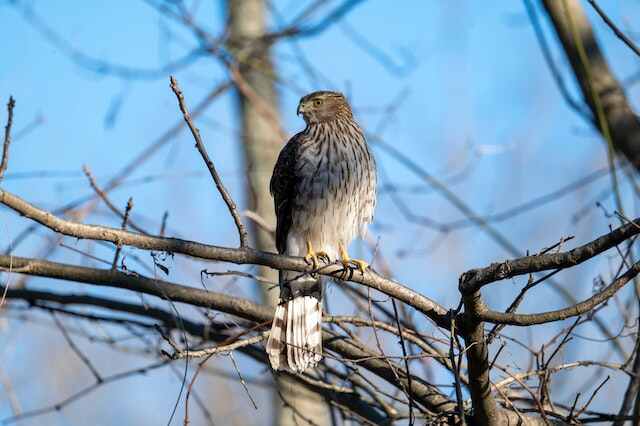
The Diet of Bats
Bats are a diverse group of mammals that belong to the order Chiroptera.
There are over 1,400 species of bats, making them one of the largest groups of mammals.
Bats are known for their unique feeding habits, which range from nectar-feeding to insect-eating to consuming small vertebrates.
Types of bats
Various species of Chiroptera, the only mammal capable of sustained flight, can be classified into two main types: microbats and megabats.
Microbats, which are smaller and more common, are insectivorous and use echolocation to navigate and find prey.
Megabats, on the other hand, are larger and primarily fruit-eating, though some species also consume nectar, pollen, or insects.
The diversity of bat species is vast, with over 1,300 species identified worldwide, each with unique adaptations and behaviors.
While hawks are known predators of bats, the predation rates vary depending on the bat species and the hawk’s hunting strategy.
Understanding the types of bats and their behaviors is crucial in comprehending their ecological roles and conserving their populations.
Moving forward, the feeding habits of bats will be explored to provide more insight into the dietary interactions between bats and other animals.
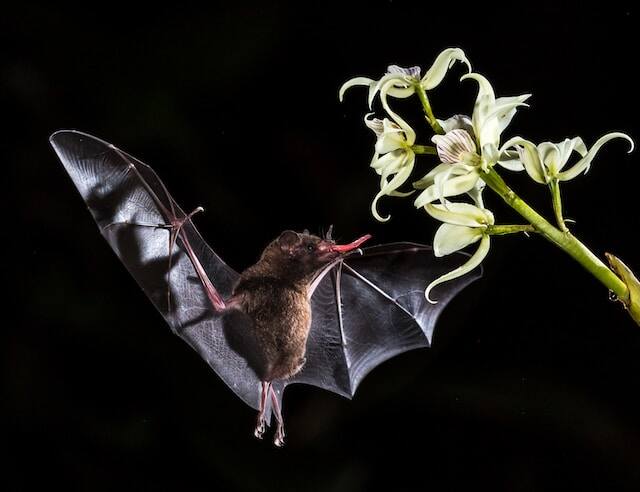
Feeding habits
The dietary habits of Chiroptera, a diverse and widespread order of mammals, are a crucial aspect of their ecological roles and conservation.
Feeding behaviors vary greatly among bat species, with some consuming insects, fruits, nectar, or even blood.
Insectivorous bats are the most common and consume large quantities of insects, which contributes to controlling insect populations and pollination.
Frugivorous and nectarivorous bats play an important role in seed dispersal and pollination of plants. Vampire bats feed on blood and have a significant impact on livestock populations.
Overall, the feeding behaviors of bats have a significant impact on ecosystems and their conservation.
The circumstances when hawks eat bats are influenced by various factors, such as habitat, prey availability, and competition.
Circumstances when Hawks Eat Bats
Under certain conditions, hawks have been observed preying on bats, such as during periods of low prey availability or when bats are in flight during the daytime.
Predation patterns suggest that hawks typically prey on small mammals, birds, reptiles, and insects. However, bats are also included in their diet, especially when food sources are scarce.
This is an important ecological significance that should be considered, as hawks play an important role in regulating the ecosystem by controlling the population of flying creatures.
It is also worth noting that hawks are highly adaptable creatures, and they are capable of diversifying their diet depending on the availability of prey.
The ability to switch between different food sources is a unique characteristic that allows hawks to survive in various environments and thrive in the wild.
In the subsequent section about hawk predation on bats, we will explore the different species of hawks that prey on bats and the specific hunting techniques they use.
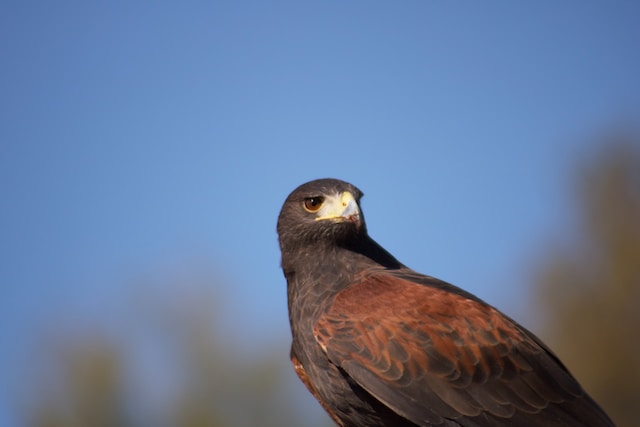
Hawk Predation on Bats
Hawk predation on bats is a fascinating subject, as it involves the study of the hunting behavior and ecological significance of different hawk species.
Hawks are known to prey on bats, with some species such as the Cooper’s hawk and the sharp-shinned hawk being particularly adept at catching them.
The interaction between hawks and bats has ecological implications, as bats are important pollinators and insect predators, and their decline due to predation could have negative effects on ecosystems.
The hunting behavior of hawks also varies depending on the species and habitat, with some hawks hunting bats in open areas while others hunt them in wooded areas.
Understanding hawk bat interactions can provide insights into the ecological dynamics of habitats and the importance of biodiversity.
The subsequent section will explore bat adaptations to avoid predation.
Do Hawks Eat Bats?
Yes, some hawk species do eat bats. Hawks are opportunistic predators and their diet varies. While bats may not be a primary food source, certain hawk species have been observed preying on bats.
This behavior depends on factors such as habitat, availability of prey, and the specific hunting strategies employed by the hawks.
Bat Adaptations to Avoid Predation
Bat adaptations to avoid predation demonstrate the remarkable evolutionary strategies that have allowed them to survive in the face of a formidable predator.
These adaptations include their unique flight capabilities, which allow them to maneuver more effectively than other flying animals.
Additionally, bats have developed sophisticated echolocation strategies that help them to locate prey and avoid predators like hawks.
They emit high-pitched sounds that bounce off objects and return to their ears, providing them with a detailed map of their surroundings.
Bats have also evolved unique physical characteristics, such as their ability to fold their wings and squeeze into tight spaces to avoid detection.
Finally, some bat species have developed the ability to emit a foul odor that discourages predators from attacking them.
These adaptations are critical to the survival of bats in the wild and demonstrate the resilience of nature in the face of adversity.
Moving forward, it is important to consider other factors that influence interactions between bats and predators like hawks, including habitat loss and climate change.
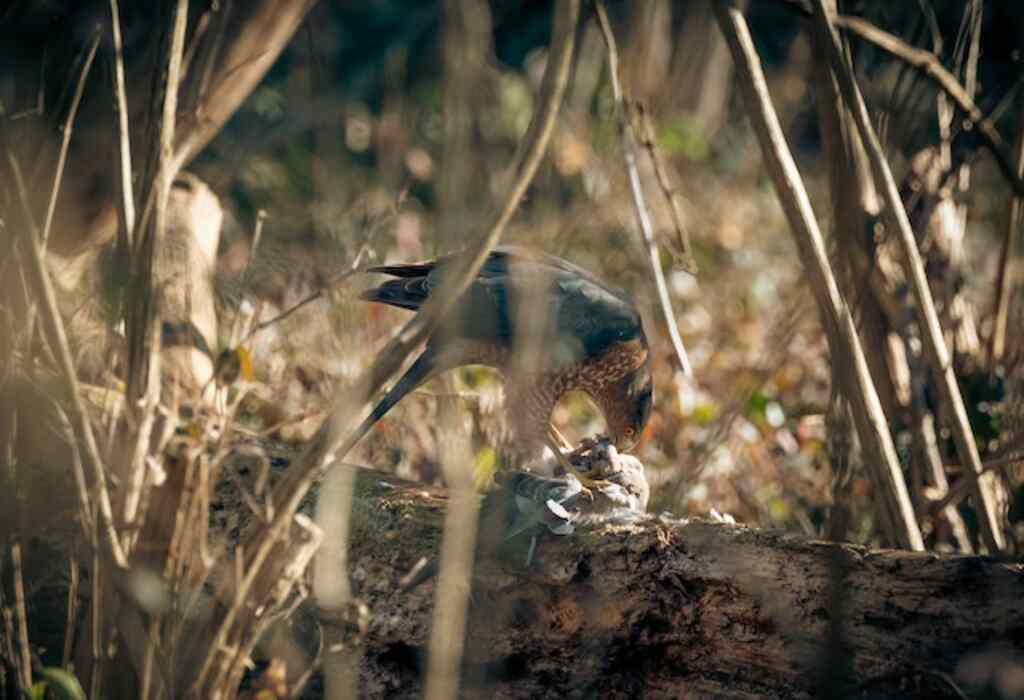
Other Factors that Influence Interactions
When examining interactions between species, it is important to consider factors beyond physical adaptations.
Habitat can greatly influence the types of interactions that occur between species, as different environments may provide different resources or pose different challenges.
Additionally, seasonal changes can have an impact on interactions as well, as species may undergo behavioral or physiological changes during certain times of the year.
Geographic location can also play a role, as different regions may have distinct communities of species with unique relationships and interactions.
Habitat
In the dimly lit caves and crevices of the world, bats find solace in the cool, damp environment. Their habitat plays a crucial role in their survival and overall well-being. Here are a few factors that influence their habitat:
- Location: Bats can be found in almost every part of the world, except for the Polar Regions. They prefer to live in areas where there is a lot of vegetation, such as forests, fields, and wetlands.
- Roosting sites: Bats require a place to rest during the day, and they prefer dark and secluded areas such as caves, tree hollows, and abandoned buildings.
- Migration patterns: Some species of bats migrate to different areas during different times of the year to follow their food source.
Understanding the habitat of bats is essential in understanding their behavior, including their interactions with other animals such as hawks. As we delve deeper into seasonal changes, we will explore how these factors influence the behavior of bats and their predators.
Seasonal changes
Throughout the year, the environment around bats undergoes seasonal changes that affect their behavior and survival. Climate effects, such as temperature, humidity, and precipitation, play a significant role in shaping bat behavior.
During winter, temperature drops significantly, forcing bats to migrate to warmer areas. Migration patterns of bats are also influenced by the availability of food.
As insects become scarce during the colder months, bats migrate to regions where food is abundant. In contrast, during summer, bats tend to stay in their original habitats as food is readily available.
Additionally, the breeding season of bats is influenced by seasonal changes.
In conclusion, seasonal changes play a critical role in the survival of bats, affecting their behavior, migration patterns, and breeding season. The subsequent section will explore the geographic location of bats and its impact on their diet and habitat.
Geographic location
As we discussed previously, seasonal changes play an important role in the natural behavior of bats and hawks. However, another factor that affects their interaction is their geographic location.
In urban areas, the availability of prey and nesting sites can be very different from their natural habitats, leading to changes in their behavior.
For example, some hawks have adapted to urban environments by preying on pigeons and rats instead of their usual prey.
On the other hand, bats in urban areas may face more threats from predators like domestic cats and owls.
Additionally, the impact of climate change on bat hawk interactions is a growing concern. As temperatures rise, bat populations may decrease, leading to a decline in the food source for hawks.
This could have a significant impact on the ecosystem and food chain. Therefore, it is important to consider these factors when managing and conserving these species.
The next section will explore some of the conservation strategies that have been put in place to protect these animals and their habitats.

Conservation and Management
Conservation and management of wildlife populations, including those of bats and hawks, require a comprehensive approach that considers ecological, economic, and social factors.
Conservation strategies should aim to protect and restore habitats for both bats and hawks, as well as mitigate human impacts such as habitat destruction, pesticide use, and hunting.
Effective conservation efforts also involve collaboration between scientists, policymakers, and local communities to ensure the sustainability of these species and their ecosystems.
Furthermore, a better understanding of the ecological roles of bats and hawks is crucial for effective management.
Bats, for instance, are essential pollinators and insect controllers, while hawks play a vital role in regulating populations of prey species.
The conservation and management of these species demand a holistic approach that addresses the interconnectedness of ecosystems and their inhabitants.
Thus, understanding the importance of hawks and bats in ecosystems is crucial to developing effective conservation and management strategies.
The Importance of Hawks and Bats in Ecosystems
Conservation and management efforts have been crucial in preserving the populations of hawks and bats. However, these species are not only valuable in terms of their conservation status, but also in their ecological roles.
Hawks and bats play important roles in maintaining the balance of ecosystems, and their absence can have widespread effects.
The importance of biodiversity cannot be overstated, and the presence of hawks and bats helps to ensure that ecosystems remain balanced. Here are four ways that hawks and bats contribute to ecosystem health:
- Pest control: Both hawks and bats feed on insects, helping to control populations of pests that can damage crops and other vegetation.
- Pollination: Bats are important pollinators, particularly for plants that bloom at night.
- Seed dispersal: Bats also play a key role in seed dispersal, helping to spread seeds throughout ecosystems and promote the growth of new plants.
- Predator-prey relationships: Hawks are apex predators, and their presence helps to regulate populations of prey species. This in turn can have cascading effects throughout the food chain, promoting overall ecosystem health.
The importance of hawks and bats in ecosystems goes beyond their conservation status. These species play crucial roles in maintaining ecological balance, and their presence is essential for the health of ecosystems.
Frequently Asked Questions
How do hawks catch bats in flight?
Hawks have superior visual abilities, allowing them to detect bats in flight. Bats use sonar to navigate, but hawks can anticipate their movements and swoop in to catch them. Habitat plays a crucial role in their interactions.
Do all species of hawks eat bats, or only certain ones?
Hawks and bats share a predator-prey relationship where some hawk species consume bats. This impact could be significant in local bat populations. Research suggests not all hawk species eat bats, and further investigation is needed to understand the dynamics.
Can bats defend themselves against hawk attacks?
Bats have evolved various defense mechanisms against hawk attacks, such as echolocation and agility in flight. Hawks use hunting strategies like ambush and pursuit to catch their prey, but bats have the ability to evade such attacks.
Are there any negative impacts on the ecosystem if hawks eat too many bats?
Just as a body needs equilibrium to function properly, an ecosystem requires ecological balance to function optimally. If hawks eat too many bats, it could potentially disrupt the food chain, leading to a negative impact on the ecosystem’s health.
How do scientists study the interactions between hawks and bats in the wild?
Scientists study the interactions between hawks and bats in the wild using camera trapping and radio telemetry. These techniques allow for the collection of data on the movements and behaviors of both species without disrupting their natural behaviors.
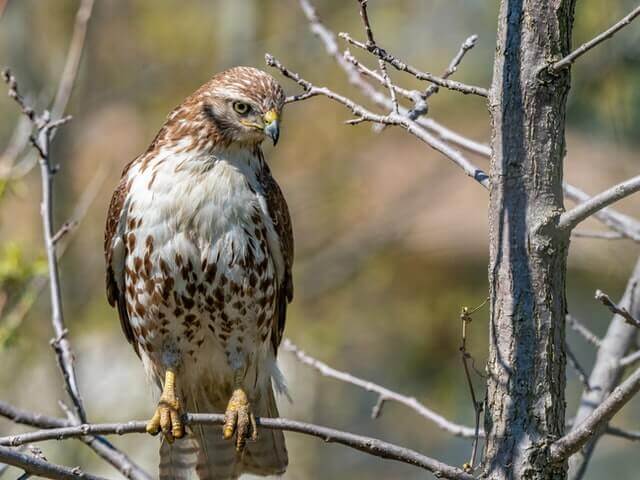
Conclusion
In conclusion, hawks and bats are two fascinating species that play important roles in ecosystems. Hawks are known for their predatory behavior and are opportunistic feeders that consume a variety of prey, including bats.
Bats, on the other hand, are nocturnal creatures that feed on insects, fruits, and nectar. However, they are also preyed upon by hawks and other predators.
The interaction between hawks and bats is complex and influenced by various factors such as habitat, behavior, and physiology.
While hawks may occasionally prey on bats, bats have also developed adaptations to avoid predation, such as echolocation and flight maneuvers.
Conservation and management efforts are important to ensure the survival of both species and maintain the balance of the ecosystem.
Therefore, understanding the diet and behavior of hawks and bats, as well as the factors that influence their interactions, is crucial for effective conservation and management strategies.
By protecting these species and their habitats, we can preserve the biodiversity and ecological functions of our planet.
The intricate relationship between hawks and bats is just one example of the many fascinating coincidences that occur in nature, reminding us of the wonders and complexities of the natural world.

